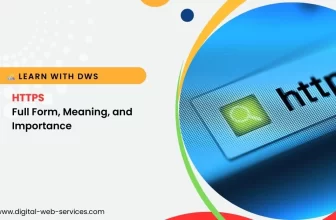
If you want to become a video creator, you need to be on YouTube. While there are other vlogging platforms out there, YouTube practically dominates the marketplace. Founded in 2006, this site has grown to become one of the most significant search engines in the world. Here are some stats to put it into perspective:
- The site has over 122 million unique visitors per day.
- Most (62 percent) US YouTube users access the site at least once daily.
- The average user spends around 14 minutes on YouTube every day.
- About 500 hours of content gets uploaded to YouTube every minute. That translates to 720,000 hours of content per day.
With so many videos available on YouTube, the prospect of running a successful channel may seem daunting. However, if you follow the steps in this guide, it’s possible. Whether you’re a business trying to augment your main offerings with informative videos or a vlogger hoping to make money on YouTube, here are the steps to become a hit.
Step One: Decide on Your Niche and Concept
No matter what, you won’t be able to appeal to everyone on YouTube. Instead, it’s much better to find a niche and focus all your attention and energy on that. Some examples of niches include:
- Nature – You can focus on animals, wildlife, conservation, hiking, biology, and more.
- Finance – Perhaps you’re offering financial advice to new users, or maybe you will provide insight into the financial industry.
- Tips and hacks – Many channels focus on discovering and promoting unique ways to accomplish different goals. You can either research hacks online and put them to the test or come up with your own.
- Video games – While Twitch is the unofficial site for streaming gameplay, you can start a YouTube channel related to video games. For example, you can discuss new releases, tips and tricks for different games, or how games have influenced pop culture.
When coming up with a niche and concept, it’s best to pick something that’s both narrow and expansive. For example, if you’re starting a channel focused on tips and life hacks, you can diversify by discussing hacks that have to do with different aspects of life. So, one video could be kitchen hacks, another could be retirement hacks, and so forth.
You should also pick a niche that is near and dear to your heart. To be successful, you’ll need to produce a lot of content regularly, so it should be something you’re passionate about so you don’t get bored and want to stop.
Finally, do some research to see what other people are doing within this niche. What could you do differently to stand out? For example, perhaps you can add personality or humor to your videos, especially if the content is a bit complex or dry.
Step Two: Set Up a Channel
Fortunately, YouTube makes it easy to set up a new channel, and you can be up and running in a few minutes. All you’ll need is a Google account, and you can create your channel from scratch. Be sure to come up with a catchy name that relates to your content structure without putting you into something too narrow. Also, consider how the name may sound as a logo since you want it to be memorable and remarkable.
Ideally, when creating a channel, you’ll have one or two videos to upload immediately. However, even if you don’t, that’s okay. Once you’ve created your channel, be sure to familiarize yourself with the various elements like how to upload a video, how to manage your videos and watch history, etc.
Step Three: Create Your Branding Assets
The key to making your channel successful is your ability to market yourself to your target audience. So, you must create various branding elements like:
- Logo – A logo is an important part of your YouTube channel, so it’s important to get it right. However, you don’t have to spend too much time thinking about it – you can create a logo that looks good on your profile quite easily online. Keep in mind that YouTube has a circular profile picture, so make sure it looks good within those confines.
- Banner – Your banner is different from your logo, but it should have your logo on it. It’s very easy to create a banner, so you can create many and change the banner image regularly to promote your latest video. Most channels use proprietary pictures related to their niche.
- Social media profiles – You should promote your YouTube channel across different platforms, so it helps to create these simultaneously.
- About blurb – As you gain new followers, they’ll likely want to learn more about you and why you’re motivated to create content. So, developing a compelling “about me/us” blurb makes it easy to stay consistent across different sites.
- Brand identity – Unless your channel is all about you, you should develop a brand identity. This identity is what people will experience when watching your videos and interacting with your channel. For example, do you want to become an authority within your niche, or are you looking to be a fun and entertaining personality?
Step Four: Get Videography Equipment
Since your channel will need videos to thrive, you need equipment to shoot your content. An essential list of components includes:
- High-quality camera – While you can shoot videos on your smartphone, we recommend investing in a high-quality camera. You should also have multiple camera options, depending on the kinds of videos you plan to create. For example, having a GoPro-style camera allows you to get POV shots from different angles that wouldn’t be possible with a traditional DSLR model.
- Microphone – If you’re shooting anything with dialogue, you should have a boom mic and some lavaliere microphones. Lav mics attach to individuals so they can capture their audio even as they move around. Boom mics offer better sound quality, so your videos don’t seem amateurish.
- Lights – Depending on where you plan to shoot, you may need film lights to illuminate your subjects. Even if you’re shooting outside, lights can help fill in any dark spaces, so your field of view is always in focus.
- Editing software – Once you shoot your material, you need to be able to cut it into something watchable, which you can do with the help of an editing software. Also, consider whether you’ll add narration or visual effects to your final videos.
Step Five: Plan Your Content
The best YouTube channels will plan content well in advance and create a shooting schedule. This step is crucial because it ensures you can focus your attention where it’s needed most. Also, once you decide on the specific content you want to create, you can come up with elements like locations, props, backgrounds, actors, and more.
You may also need scripts if you’re planning on shooting content that needs to be rehearsed and practiced. However, a script might not be necessary if you’re trying for more of a “reality show” feel. In that case, you should have a basic outline of different videos and scenes to know what you’re trying to shoot.
You should also come up with a release schedule. For example, do you want to release new videos once a week? Every other week? Once a month? You may start your channel with a longer schedule and increase the frequency as you build an audience. However, consistency is crucial to maintain your viewers over the long term.
Step Six: Start Creating and Publishing Videos
Once you create your first video, you can start promoting your channel. However, we recommend promoting your channel once you have two or three videos available, so fans have more content to view once they discover you. YouTube makes it easy to publish videos – all you have to do is follow the prompts and choose a thumbnail for the video.
When it comes to the thumbnail, we recommend creating your own. This way, you can be sure it’s captivating and will get users to click on your content. If you only use an image that YouTube pulls from the video itself, your options are limited. Also, these screen grabs may not adequately capture the spirit of the video, so it’s better to maintain control yourself.
Step Seven: Market Yourself and Create a Community
One crucial factor to consider when marketing your channel is that it takes time to build an audience. So, don’t get discouraged if you don’t get lots of views quickly. Instead, promote individual videos for a while until you’re sure you’ve saturated various platforms. Also, you may want to promote content on different days and times on each platform to maximize its potential.
For example, let’s say you publish a video on Monday. Most of your audience is on Facebook, so you also promote it there on Monday. Then, you promote the video on Twitter and Instagram on Tuesday by showing off small clips from it. You continue to market your video on all three channels every few days to ensure that all your followers (including new ones) have a chance to hear about it. Overall, this process may take a couple of weeks, and then it’s onto the next video.
If you’re experiencing a slow period or taking a break from shooting new content, feel free to promote older videos. This tactic works well as you build your audience since new followers may not know about archived content.
Step Eight: Optimize Your Channel
Since YouTube is part of Google, you get lots of analytical data about your videos. For example, you can see how many views it has, when they happened, and even know where your audience is from. All of this data can give you valuable insight into your audience and how they react to your content.
You should pay attention to these elements the most:
- Number of views – See how this number increases and changes over time. For example, if most views happen within three days after publishing a video, that’s when you should promote it the most.
- Demographic Location – If you’re getting more viewers from other states or countries, consider creating content unique to them.
- Content Type – Which videos get the most attention? Knowing that information means you can tailor your content accordingly to engage your audience better.
Overall, building a successful YouTube channel takes time and perseverance. As long as you continue to produce high-quality content, you should get a sizable audience. Once you reach 1,000 active viewers, you can participate in YouTube’s partnership program and start monetizing your videos to establish a new revenue stream.
Digital Web Services (DWS) is a leading IT company specializing in Software Development, Web Application Development, Website Designing, and Digital Marketing. Here are providing all kinds of services and solutions for the digital transformation of any business and website.










